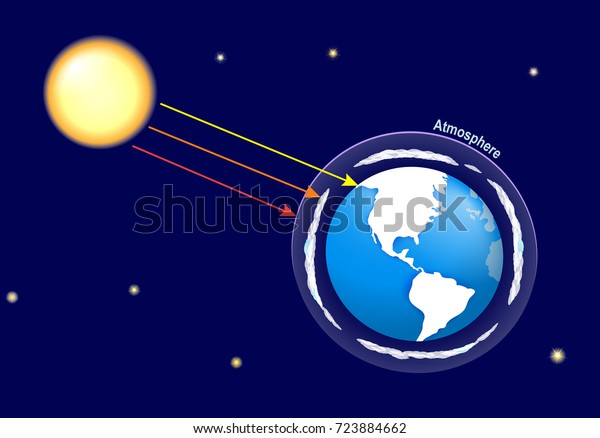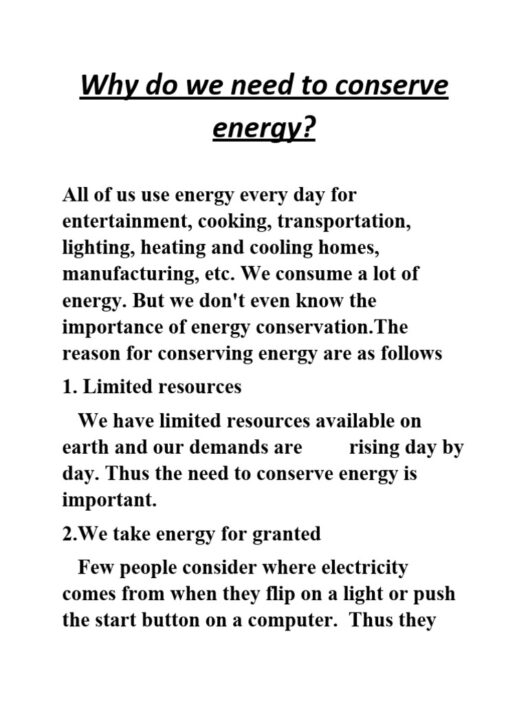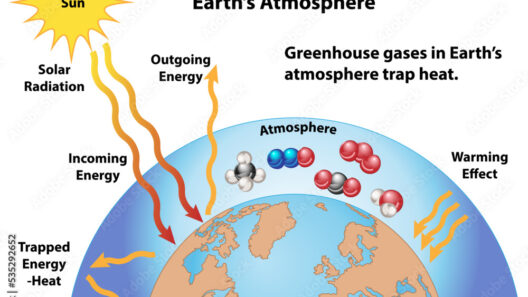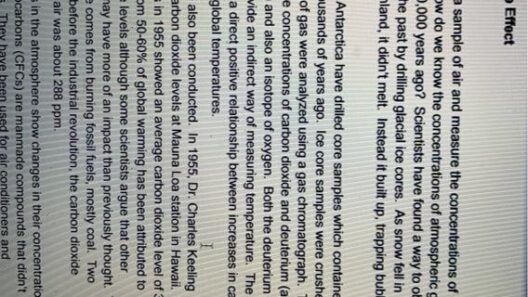The Enhanced Greenhouse Effect: A Closer Look at Human Contributions to Global Warming
The earth’s atmosphere is an intricate blanket of gases that envelops our planet, allowing life to thrive while simultaneously regulating its temperature. In a natural state, this greenhouse effect is vital for maintaining the delicate balance of our ecosystem. However, human activities have ramped up this phenomenon to unprecedented levels, leading to what we term the enhanced greenhouse effect. This article will delve into the mechanics of the enhanced greenhouse effect, uncovering how anthropogenic actions have intensified global warming and exploring potential implications for our planet.
The Origins of the Enhanced Greenhouse Effect
To understand the enhanced greenhouse effect, one must first recognize how the natural greenhouse effect operates. A variety of gases, including carbon dioxide (CO2), methane (CH4), and nitrous oxide (N2O), naturally exist in our atmosphere. These gases absorb and re-radiate heat, trapping some of the warmth from solar radiation. Without this process, Earth’s average temperature would plummet, making it inhospitable to life as we know it.
However, since the Industrial Revolution in the late 18th century, human activities, particularly the burning of fossil fuels, have markedly increased the concentration of these greenhouse gases. As industrialization, deforestation, and agricultural practices have proliferated, so too have emissions. Consequently, the atmosphere has become a more efficient heat trap, leading to an observable warming trend that scientists attribute to human-induced factors.
The Role of Carbon Dioxide: The Major Player in Climate Change
Carbon dioxide stands out as the most significant greenhouse gas emitted by human activity, primarily due to its extensive use in energy production. Coal-fired power plants, automotive emissions, and numerous industrial processes release vast quantities of CO2 into the atmosphere. Deforestation and land-use changes exacerbate this issue by reducing the number of trees that sequester carbon from the atmosphere. In essence, we are not only adding more CO2 to the air but simultaneously eliminating nature’s own mechanisms for absorbing it.
The effect of increased CO2 concentrations is profound. Research indicates that current levels are higher than they have been for at least 800,000 years, resulting in a corresponding rise in global temperatures. This trajectory is alarming, with projections suggesting that without substantial reductions in CO2 emissions, global temperatures could rise by as much as 4°C to 6°C by the century’s end. Such scenarios would lead to catastrophic outcomes, including devastating sea-level rise, severe droughts, and unprecedented weather patterns.
The Impact of Methane and Nitrous Oxide: Lesser-Known Contributors
While carbon dioxide garners the majority of public attention, other greenhouse gases like methane and nitrous oxide play vital and compounding roles in the enhanced greenhouse effect. Methane, for example, is released during natural gas extraction, livestock farming, and the decomposition of organic waste in landfills. Remarkably, methane is over 25 times more effective at trapping heat in the atmosphere than CO2 over a 100-year period, making it a potent climate change accelerator despite its relatively lower concentrations.
Nitrous oxide, primarily emitted from agricultural processes involving synthetic fertilizers, has a global warming potential approximately 298 times greater than CO2 over the same timeframe. Its contribution to the enhanced greenhouse effect underscores the significance of modern farming practices and the necessity for sustainable agricultural solutions to mitigate these emissions.
The Consequences of the Enhanced Greenhouse Effect
The ramifications of the enhanced greenhouse effect are far-reaching and complex. The escalation of global temperatures results in the melting of polar ice caps, leading to elevated sea levels that threaten coastal cities worldwide. According to experts, millions could be displaced by rising tides, creating “climate refugees” who will be forced to abandon their homes.
Additonally, shifts in ecosystems and habitats have already begun to manifest. Species are facing challenges in adapting to the rapidly changing environment, leading to increased extinctions and biodiversity loss. Altered precipitation patterns and heatwaves are also more prevalent, culminating in harsh droughts, flooding, and more intense storms. Such climate-related disasters not only endanger wildlife but also jeopardize food security and human health.
Towards a Sustainable Future: Mitigating the Enhanced Greenhouse Effect
Addressing the enhanced greenhouse effect and its detrimental impacts requires a multifaceted approach that focuses on reducing greenhouse gas emissions across all sectors. Transitioning to renewable energy sources like wind, solar, and hydropower is critical. Encouraging energy efficiency in industrial processes and residential homes can also make a significant difference.
Reforestation and adopting sustainable land management practices can enhance carbon sequestration systems, helping to offset emissions. Furthermore, shifts in agricultural practices toward regenerative farming can dramatically reduce methane and nitrous oxide emissions, bolstering food security while lessening environmental impact.
Public awareness and activism are equally important. Educating individuals about their carbon footprint and encouraging lifestyle changes, such as using public transportation and reducing meat consumption, can collectively contribute to a more sustainable world.
Conclusion: A Call to Action
The enhanced greenhouse effect is a critical issue requiring immediate action. Understanding its implications not only informs policy decisions but also empowers individuals to strive for change. As the evidence mounts and the urgency escalates, collective responsibility is paramount to curbing the detrimental impacts of human-induced climate change.








